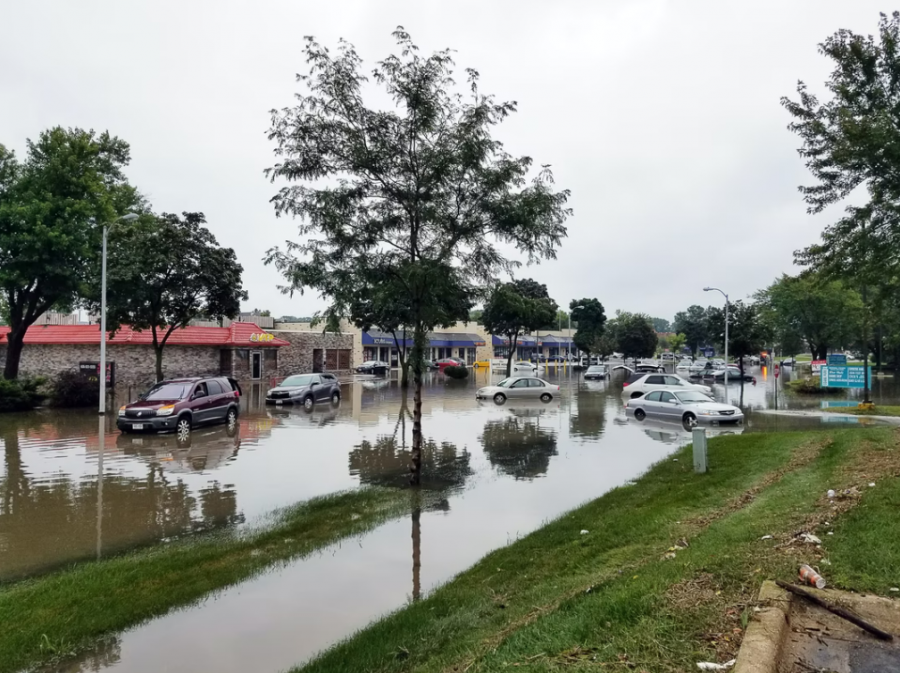
A flash flood can occur quickly and without warning. However, there are ways you can protect your home now before floods occur and ways to mitigate damage after a flood. To ensure you get your home back together quickly, you will want to begin with cleaning and restoration work as soon as you can. Taking quick action will prevent damage from spreading and help you save on repairs. Here are some ways you can act to get a head start on flood damage restorations.
Remove Standing Water
Once the flooding subsides, there is standing water that is often left behind. This happens in areas where the water has no exit, and it is going to need to be removed as quickly as possible. Use pumps and brooms to get any excess water out of your home to begin restoration work. Before you begin cleaning the water out, make sure that there are no hazards like damaged utilities or hazardous contamination that can cause injury or health problems.
Clean Up Sediments and Remove Water-Logged Materials
Once the water is gone, there is often going to be sediment and sludge left behind in your home. Clean this debris out of your home to make sure the work environment is safe and to prevent any hazards.
This is also a good time to start removing water-logged materials like carpets and drywall. Sometimes, these materials can simply be dried out, but often, they simply trap water and become a harbor for mold and mildew. Removing these things quickly will help to prevent mold problems that often develop after flood damage. If you’re wondering whether certain areas need to be ripped out or not, talk to a professional.
Protect Furniture and Other Objects From Flood Water
When cleaning your home, there may be furniture that is damaged and needs to be thrown away. However, there will also be objects that you can save or repair. Keep any furniture and other objects off the ground where there is water. You can use plastic bags or tarps to protect the bases of objects from contacting wet floors, standing or debris that may be in your home.
Get Water Damage Restoration
If your home is damaged by flooding, contact a water damage restoration as soon as possible to minimize the damage. Water damage restoration needs to be started within 24 to 48 hours after it’s safe to re-enter your home. Water damage can occur quickly, and mold can begin to develop within 24 hours. A water damage restoration company can quickly determine what needs to be done and get started right away.
Plan Home Modifications
When your home has been damaged due to flooding, there is going to be demolition work that needs to be done. To repair the damage, you are probably going to have to replace flooring, drywall, and woodwork. Do the demolition and remove any damaged materials and plan the renovations that need to be done. Talk with a building and renovations service for help with planning the repairs and improvements to rebuild your home and make it better than before to prevent future problems.
If your home is in an area that frequently floods or in a hurricane zone, there are modifications you can make to prevent damage in the future. One modification you can do is to add foundation vents. These allow water to flow through the home instead of rising upwards. According to the Federal Alliance for Safe Homes, or FLASH, you will need at least two vents on different walls.
You can also apply sealing materials to your walls to prevent water damage and do what is called dry-proofing. To further protect your home, you can raise the house on columns or piers to raise it above expected water levels.
Add Grading
The grading of the land around your home can determine where the water flows. Ideally, you want the water to drain away from your home. To determine the flow of water, watch how water flows during a moderate rainstorm.
Areas of standing water close to your home can indicate a drainage problem. Having the land around your home graded to direct water flow away from your home can prevent flooding problems later.
Raise Electrical Outlets
You should never enter a flooded home before the electricity is confirmed to have been turned off. Water and electricity can be a lethal combination. To flood proof your home, you can have all electrical outlets, switches, and wiring installed at least a foot above the expected water level.
Anchored equipment like water heaters and furnaces can be situated above the expected flood level of your home. A contractor can help determine these levels.
Install Water Valves
You can install backflow valves for interior and exterior valves. During a flood, the sewer system can back up into your home, causing further damage. These backflow valves can help to prevent this.
Gate valves will provide a stronger seal than either check valves or flap valves will. They are more complicated to use and operate by hand, but they are often worth it. These valves can be installed on all pipes that enter your home.
These are some of the ways that you can save on flood damage restorations by taking action and starting the cleanup process now. If your home has been flooded, contact a flood damage restoration service to help with repairs. If your home is likely to experience another flood in the future, make sure that you make the right renovations now to prevent permanent damage in the future.
